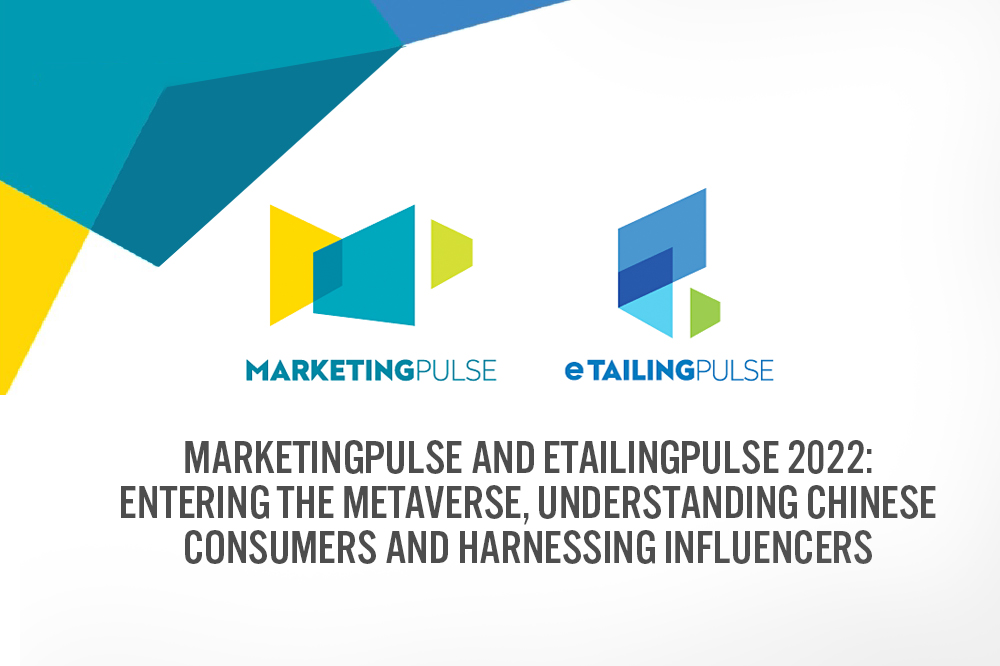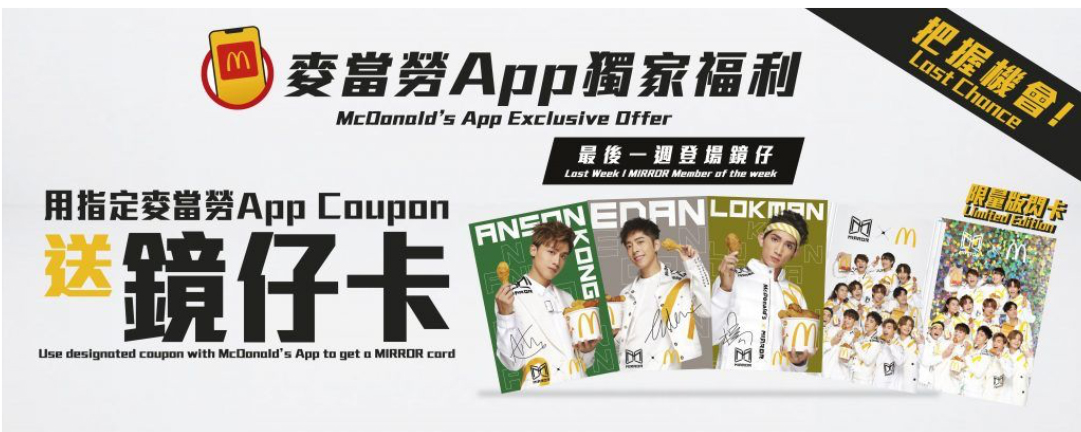
DIpil Das
Introduction
Coresight Research attended MarketingPulse and EtailingPulse 2022, a virtual forum held on March 16-–17, 2022. Hosted by the Hong Kong Trade Development Council, the event brought together more than 60 marketing executives, brand representatives, advertising elites and e-commerce experts globally to examine the latest global trends in marketing and e-commerce. In this report, we present key insights from the event.MarketingPulse and EtailingPulse 2022: Coresight Research Insights
Brands Entering the Metaverse Must Serve Consumers’ Needs Coresight Research has identified the expanding metaverse as a key trend to watch in retail, with luxury and fashion brands such as Gucci and NIKE among the metaverse’s pioneers. Panelists at MarketingPulse and Etailing Pulse 2022 gave their views on themes driving the development of the metaverse and how new brands and retailers can enter the space. Sébastien Borget, COO and Co-Founder of The Sandbox, explained that the company was founded to make the metaverse a creative place where users can have fun and interact with others using non-fungible tokens (NFTs). Borget also stressed that the metaverse is a growing industry, with millions of new jobs to be created, including for content creators and game designers. [caption id="attachment_143983" align="aligncenter" width="700"] Left: Bowie Lau, Partner at True Global Ventures; Right: Sebastian Borget, COO and Co-Founder, The Sandbox
Left: Bowie Lau, Partner at True Global Ventures; Right: Sebastian Borget, COO and Co-Founder, The Sandbox Source: HKTDC [/caption] Phone case manufacturer Casetify recently created a new platform using NFT verification technology to create custom phone cases. According to Wesley Ng, Co-Founder and CEO of Casetify, the new launch continues the company’s founding theme of enabling customers to express their individuality. Gary Liu, CEO of media company South China Morning Post (SCMP), stated that co-ownership, co-creation and peer-to-peer relationships are some of the major incentives drawing consumers to engage in the metaverse. With this in mind, SCMP recently created an NFT project themed around Hong Kong’s historical artefacts, in an attempt to connect the Hong Kong community through replicating these cultural artefacts in digital form. Audrey Ma, Director (HK, Macao and Taiwan) of online marketplace StockX, described how the platform has used social media platforms Twitch and Discord—both popular among metaverse users—to better communicate with Gen Z customers. Many speakers at MarketingPulse and Etailing Pulse emphasized that brands and retailers must prioritize the needs of users and communities, instead of rushing to monetize the metaverse and NFTs; before brands enter the metaverse, they must have a clear idea of what communities they intend to serve and how. Chinese Consumers Are Embracing Healthier Lifestyles and Wellness Through analysis of search terms and posts, Chinese social media and e-commerce platform Xiaohongshu (also known as Little Red Book) has found that Chinese consumers in 2022 are increasingly embracing wellness and healthier lifestyles. The platform highlighted the following current trends among Chinese consumers:
- Engaging in more physical activities: Searches for hiking apparel on the platform grew by 20 times year over year, and skiing is now the fifth-most popular search term on Xiaohongshu.
- Becoming more social: Common search terms on Xiaohongshu include taking photos in convenience stores and immersive exhibitions.
- Embracing wellness and spiritual well-being: “Soul-healing travels” and “living alone” have become common search terms on Xiaohongshu.
- Entering the metaverse: the number of posts on Xiaohongshu relating to virtual avatars increased by 4,684% year over year, and the number mentioning NFTs by 1,228%.
- Living sustainable lifestyles: “low-carbon travel” and “low-carbon living” have become common search terms on Xiaohongshu.
 Glico nut beverage range in China that includes fibres
Glico nut beverage range in China that includes fibres Source: Company website [/caption] Trends identified by Xiaohongshu and Glico present clear opportunities for sports and food brands that can cater to the new emotional, social, health and wellness needs of Chinese consumers. Influencers and Tailored Content Increase Customer Engagement The Covid-19 pandemic has made both consumers and retailers pivot toward online retail, and according to panelists at MarketingPulse and Etailing Pulse, they have deployed different strategies to either use influencers or educational videos to better engage with their customers:
- In October 2021, McDonald’s Hong Kong introduced physical cards featuring popular Hong Kong boy band Mirror to reward their mobile app users upon food and drink purchases, in an attempt to drive omnichannel customer engagement and to capitalize on Hong Kong consumers’ increasing use of social media and engagement with influencers. McDonald’s Hong Kong even created a store themed around the band, attracting millions of views online. According to Tina Chao, Chief Marketing and Digital Customer Experience Officer of McDonald’s Hong Kong, the key is to choose influencers that have a close association with the brand.
 McDonald’s Hong Kong’s exclusive cards
McDonald’s Hong Kong’s exclusive cards Source: Company website [/caption]
- Hong Kong jewelry retailer Chow Tai Fook engaged top Chinese influencer Li Jiaqi to drive sales through livestreaming. Chaw Tai Fook also has its own livestreaming team, with a number of flagship stores in China leveraging Douyin (known outside China as TikTok) to increase sales.
- Beauty brand Minus+ targets different types of consumers with different video formats: According to Twinsen Fung, Director of IT, Digital Marketing and E-Commerce at Minus+, the company uses shorter videos for new customers to draw their attention, and then educational content and longer product usage videos for existing consumers.